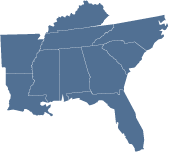The Most Productive Natural Resources: Refuge Wetlands
Wetlands are a major component of the St. Marks National Wildlife Refuge, indeed more than half of the refuge is covered by them. Yet, just what exactly is a wetland?
Generally speaking, wetlands are transitional areas between land and water bodies, where water periodically floods land and saturates the soil. The term "wetlands" encompasses a variety of wet environments such as salt and brackish water marshes, forested swamps, estuaries, ponds, bogs, even wet meadows and tundra. Wetlands can be found in virtually every nation of the world. They are precious ecological resources which serve a variety of important functions. Wetlands can provide critical habitat for fish and wildlife, blunt the destructive forces of floods and storms, cleanse polluted waters, and provide for a variety of recreational activities such as fishing, hunting, photography and wildlife observation.
Productive Natural Resources
Wetlands are important because they are among the most productive natural areas on earth. Studies have shown that wetlands can produce literally tons of organic food per year; as a result, these submerged habitats are rich feeding and breeding grounds for a diverse community of wildlife, and they are fast becoming recognized as productive and valuable public resources.
St. Marks NWR Wetlands
The wetlands of St. Marks National Wildlife Refuge comprise about 70% of the refuge's total acreage. Seven rivers and numerous creeks traverse the refuge and drain southward, through marshes, into the Apalachee Bay estuary. Numerous forested swamps also are located throughout the refuge. In addition to these natural wetlands, the refuge utilizes man-made impoundments which attract thousands of migratory waterfowl, shorebirds and wading birds, as well as other wildlife. Thus, St. Marks NWR is a well-known oasis of wetland habitats, some of which are natural and some of which are not, yet each offering its own uniqueness to the overall ecology of the refuge.
Forested Swamps
The refuge's forested swamps provide a rich habitat for a wide range of wildlife such as black bear, otter, and raccoons. They also provide spawning and nursery areas for fish. The swamps are referred to as forested because of the diversity of trees and vegetation which can be found in and around them. Conifers such as cypress, pines and cedars grow in and around these wet environments, as do some hardwoods such as gums, oaks and willows. In many of the swamps throughout the refuge, palms can be found as well. Lesser swamp vegetation can tolerate levels of pollutants which periodically mixes with the natural run-off of rain and/or floodwater. Thus, swamp vegetation provides a critical first-step in reducing the amount of pollutants which make their way into the relatively pristine waters of the Apalachee Bay.
Freshwater Marshes
The freshwater marshes of the refuge provide both feeding areas for wading birds and wintering habitats for waterfowl. In addition, they are a important nursery area for fish, and shellfish. These, in turn, attract such wildlife as alligators, various mammals, raptors, and still other types of animals. Marshes are key spawning and nursery waters for most of our commercial and sport fish, and they represent another line of defense against the spread of pollutants to the bay. Many of the refuge fresh water marshes are equipped with bacteria which can breakdown certain types of pollutants.
Saltwater Marshes
The tidal salt marshes on the refuge, like their freshwater counterparts, are important spawning and nursery areas, which give rise to many terrestrial and marine food webs. The food and cover available in these wetlands are used by a variety of juvenile estuarine fish and shellfish, which, in turn, are found in other coastal habitats as adults. For this reason, salt marshes are considered to be an important nursery ground for much of the Florida Gulf Coast's commercial seafood harvest. Saltwater marshes are also important in that they act as a medium which serves to protect both the refuge and the bay. Being strategically placed between the bay and the uplands, saltwater marshes can absorb most of the impact associated with storm surges, which sometimes hit the area during the annual hurricane season. Likewise, they can protect the bay against pollutants by filtering the runoff which flows into the bay from the north, thus, saltwater marshes are very important wetland habitats.
Estuarine Ecosystem
The refuge's estuarine ecosystem begins just off shore in the shallow waters of the Apalachee Bay. Water flowing from the salt marshes enter into the bay where vital sea grass beds and oyster bars exist. The sea grasses, which thrive in the shallow water, produce oxygen necessary for all the other animal life which live in this area. The grasses also provide habitats and protection for a number of different species of sea life. Additionally, this unique area of the bay is extremely valuable for water birds and other aquatic predators because it serves as nurseries for fish and shellfish. More than 80% of the commercial seafood catch, both by weight and species, of the Florida Gulf Coast is dependent upon the estuaries such as the one found off the shores of the St. Marks National Wildlife Refuge
Wetlands and the U.S. Fish & Wildlife Service
The wetlands of St. Marks National Wildlife Refuge are as diverse as any found in the nation and, indeed, the world. The U.S. Fish and Wildlife Service is actively working, through a variety of programs, to continue to protect and conserve these important areas. Refuge staff play an important role in educating the public about the refuge's wetlands by providing recreational opportunities, and educational/public outreach programming, which are designed to heighten the public's awareness about these sensitive areas, as well as offer a unique insight into the complex but fascinating world of wetland ecology.


